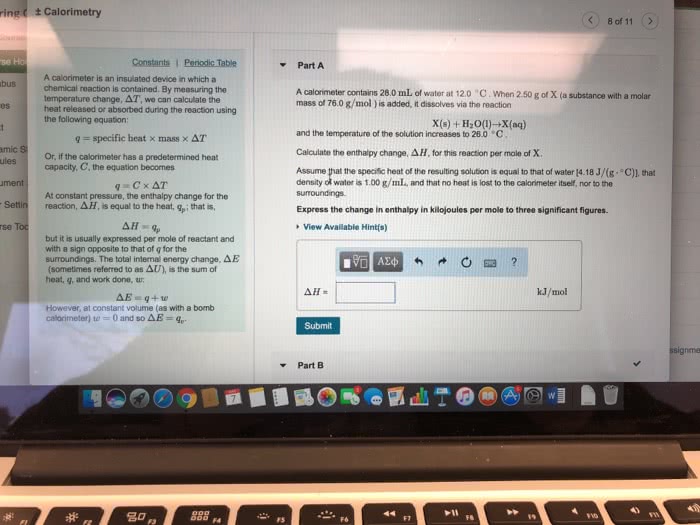CHEM1100 Lecture Notes - Lecture 6: Enthalpy, Internal Energy, Thermodynamics
Document Summary
Enthalpy: most reactions occur under conditions of constant pressure (typically atmospheric pressure) U = q + w, and for an expansion: U = qp - p v qp = u + p v: need a new thermodynamic property that is equivalent to the heat of reaction at constant pressure: enthalpy (h) H = u + pv: enthalpy change at constant pressure: ^^ this is a thermodynamically balanced equation (it includes the enthalpy change of the reaction) Internal energy and enthalpy: the general definition for a change in enthalpy: H = u = (pv: for a reaction involving only condensed phases, expansion is minor i. e. h ~ u, for a reaction involving an ideal gas: H = u + (nrt: at constant temperature: H = u + rt n (where n = nproduct gas nreactant gas) Standard enthalpy of formation, fh : change in enthalpy that results from the formation of 1mole of a compound from its.


